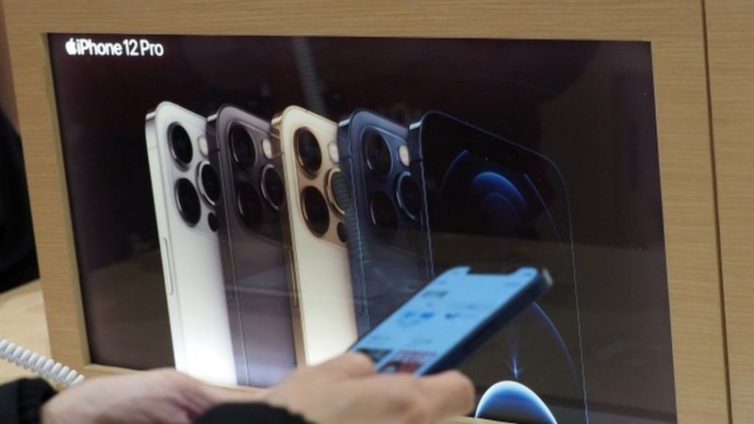Your iPhone got a new button last month, and you may not have even noticed.
No, Apple didn’t sneak into your house and secretly superglue a button onto your smartphone. But it did release iOS 14, the latest version of its iPhone software, which includes a feature called Back Tap. Back Tap adds a fascinating new “button” to your phone that blurs the line between hardware and software.
Back Tap turns the entire back of your iPhone into a giant touch-sensitive button that you can double or triple tap to trigger specific functions on your phone. There’s a good chance that you haven’t noticed it yet. Apple slipped the settings for Back Tap into its Accessibility menu.
:no_upscale()/cdn.vox-cdn.com/uploads/chorus_asset/file/21996369/akrales_201028_4231_0101.0.jpg)
Its intended purpose is to give users more options for interacting with their devices. Most of Back Tap’s options reflect that, with settings to open the app switcher, notification menu, or control center; scroll through an app or webpage; trigger Siri; or take a screenshot.
But Back Tap also ties into Apple’s incredibly robust Shortcuts app, which means you can effectively make those new buttons do almost anything you can imagine. It’s a fascinating kind of button: entirely invisible to the naked eye, completely nonfunctional until it’s enabled through software, but can be tasked to open, interact with, or accomplish nearly any task on your smartphone with just a quick tap.
That software customization is key. It’s easy to imagine a world where Apple limited Back Tap to just a few preset options focused on making the iPhone UI more accessible. But by opening it up to Shortcuts, the company turned Back Tap into a tool of limitless creativity, letting users come up with their own ways to take advantage of the new button on the back of their devices.
(It’s not just Apple. Google experimented with a similar, albeit more limited, feature for Android 11, although it didn’t end up making the final cut. Some enterprising developers have since replicated the feature for any Android device.
:no_upscale()/cdn.vox-cdn.com/uploads/chorus_asset/file/21996371/akrales_201028_4231_0046.0.jpg)
This is also a level of control that’s almost unheard of for iOS devices. Imagine if Apple let you remap the side button (for Siri and Apple Pay) on an iPhone 12 to, say, launch Google Assistant or send a preset text message to your partner. It’s practically unthinkable.
It works well, too. The software is responsive, and whatever Apple’s doing to differentiate between an intentional tap and just regularly holding your phone, it works well. I’ve found it particularly useful for triggering Control Center to quickly toggle system settings.
Back Tap repurposes the existing sensors and hardware on your iPhone with software to create a new hardware interaction that wasn’t available before. It’s a new physical button users can interact with — but one that’s almost completely free of Apple’s limitations.
Physical buttons, of course, are the most direct form of interaction. It’s why Samsung insists on a bespoke Bixby button and why Netflix pays for a spot on your Roku remote. And while Apple may not quite be willing to give up control of the physical buttons on your iPhone, Back Tap — with its almost button — is the next best thing.
Latest Stories
-
REMAPSEN celebrates 5 years of championing health and environmental awareness across Africa
2 hours -
I served with diligence and honesty; I am willing to defend my NSS tenure in court – Mustapha Ussif
3 hours -
Afenyo-Markin challenges Ahiafor’s sub judice ruling, calls it ‘dangerous precedent’
5 hours -
Mahama instructs Armed Forces to escort all vehicles in Bawku area
5 hours -
African artists, global awards, and the fight for visibility
5 hours -
This Saturday on Newsfile: GRNMA strike, ORAL probe into NSA, shut down of 64 radio stations
5 hours -
19 arrested in raid on drug and robbery dens at Kasoa Dominase, Onion Market
6 hours -
Luv FM High Schools Debate heats up as top schools advance to Round of 16
6 hours -
Asantehene urges chiefs to offer lands as equity for farming
6 hours -
GhanaFest Alberta 2025 launch ignites diaspora business momentum
7 hours -
22-year-old hearing-impaired man allegedly dies by suicide after rape accusation
7 hours -
CAETE 2025: MDF seals 10k jobs deal with China’s Yixintai Group
7 hours -
Climate Change: AGN Chair emphasises importance of Africa’s unity in global negotiations
7 hours -
TV stations risk prosecution over pirated content – Copyright Office warns
8 hours -
Anointed Engineering donates ‘Borla Macho III’ tricycle to support sanitation drive in Accra
8 hours

